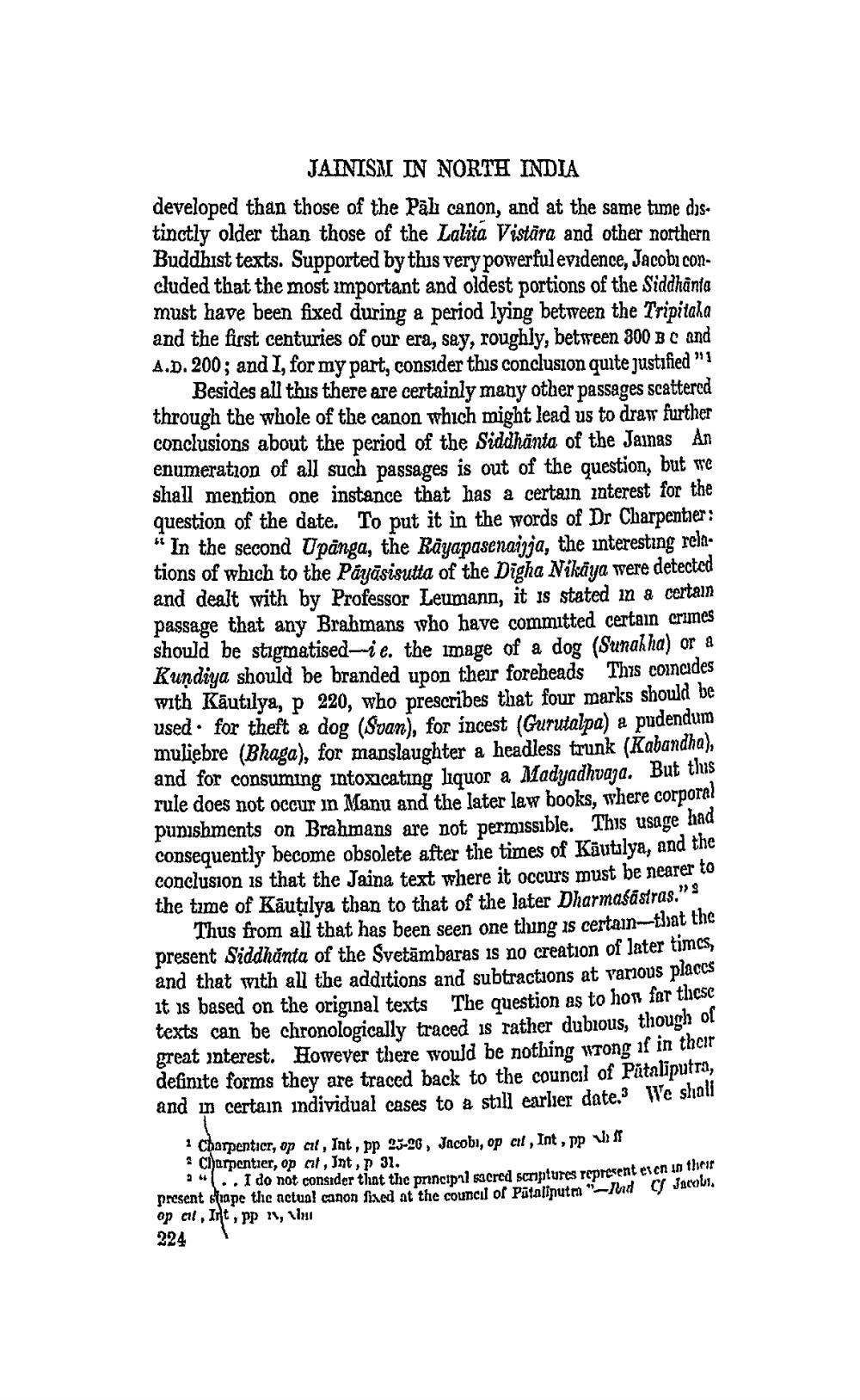________________ JAINISM IN NORTH INDIA developed than those of the Pal canon, and at the same time dis. tinctly older than those of the Lalita Vistara and other northern Buddhist texts. Supported by this very powerfulevidence, Jacobi concluded that the most important and oldest portions of the Siddhanta must have been fixed during a period lying between the Tripitala and the first centuries of our era, say, roughly, between 300 BC and A.D.200; and I, for my part, consider this conclusion quite justified": Besides all this there are certainly many other passages scattered through the whole of the canon which might lead us to draw further conclusions about the period of the Siddhanta of the Jainas An enumeration of all such passages is out of the question, but we shall mention one instance that has a certain interest for the question of the date. To put it in the words of Dr Charpentier: " In the second Upanga, the Rayapasenaija, the interesting relations of which to the Payasisutta of the Digha Nikaya were detected and dealt with by Professor Leumann, it is stated in a certain passage that any Brahmans who have committed certain crimes should be stigmatised-e. the image of a dog (Sunahka) or & Kundiya should be branded upon their foreheads This coincides with Kautilya, p 220, who prescribes that four marks should be used for theft a dog (Svan), for incest (Gurutalpa) a pudendum muliebre (Bhaga), for manslaughter a headless trunk (Kabandha), and for consuming intoxicating liquor a Madyadhvaja. But this rule does not occur in Manu and the later law books, where corporal punishments on Brahmans are not permissible. This usage had consequently become obsolete after the times of Kautsiya, and the conclusion is that the Jaina text where it occurs must be nearer to the time of Kautilya than to that of the later Dharmasastras." Thus from all that has been seen one thing is certain that the present Siddhanta of the Svetambaras is no creation of later times, and that with all the additions and subtractions at vamous places it is based on the original texts The question as to how far these texts can be chronologically traced is rather dubious, though ol great interest. However there would be nothing wrong if in their definite forms they are traced back to the council of Pataliputro, and in certain individual cases to a still earlier date. We shall Charpentier, op cit, Int, pp 25-20, Jacobi, op cit, Int , pp . Charpentier, op ml, Int, 32. " .. I do not consider that the principal sacred scriptures represent esch in the present strape the actual capon fired at the council of Patalputra u JACOW op al, Int. pp , 224




